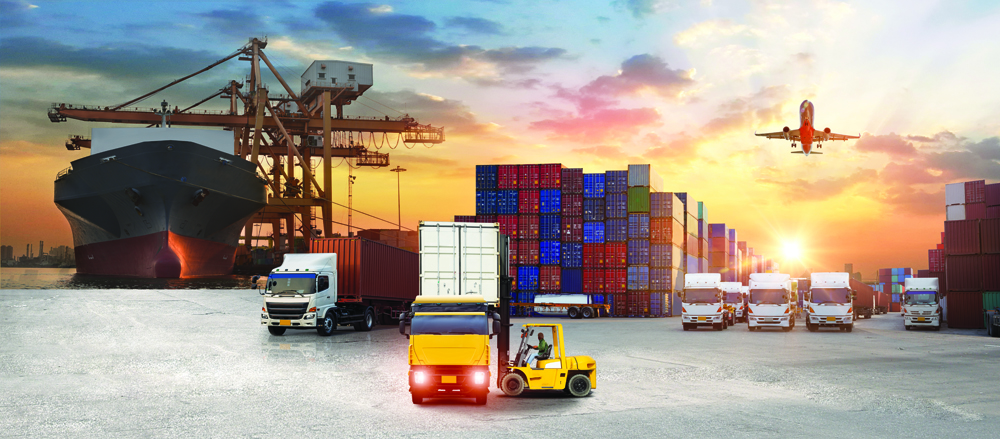Navigating the Crisis

A deliberation on how the Indian manufacturing and logistics industries can counter the global supply chain crisis…
The global economy had been on a steady path to recovery following the advent of the second wave, but the new variant has cast concerns over global growth, which would decline further if the pandemic continues. Rampant disruptions have already been seen in the travel, education, and entertainment sectors, leading the World Bank to trim its forecast by 1-1.5 percent for 2022-23.
The continued global supply chain and logistic crisis—sizeably engendered by the pandemic—has forced supply chain operators to accelerate end-to-end automation. The current global and domestic trade and economic policies certainly haven’t helped either. The shutting down of major international manufacturing hubs and ports has shored up the global price of raw materials and intermediate supplies for Indian manufacturers.
Adding to the accelerating crisis was the restriction on the mobility of human capital involved in supply chain operations, resulting in ransportation disruption, cancellation of cargo, cramped freight capacity, and extensive manual customs clearance. Consequently, there were late deliveries, operating losses, cancellation of orders, and reputational damage. The factors that influence the performance of a supply chain company are facilities, inventory, sourcing and pricing, transportation, location, and information. The pandemic has impacted all these significant factors that ensure the smooth running of operations.
Adopting advanced technologies
The short-term effects of COVID-19 seem to be wearing down, but the strains on supply chain functioning have existed long before the pandemic and need a strong focus to bring artificial intelligence (AI) from the manufacturing floor to front door delivery. Retailers are increasingly using AI to predict customer demographics and their behavior patterns to forecast demand and supply. In warehouse management, facility managers assist warehouse managers in inventory planning, forecasting, and optimization based on real-time information on the products available. Thanks to AI, appropriate stocking and shelf management can be adopted based on the data generated from production, purchase orders, and supplier delivery challans.
The Internet of Things (IoT) is proving to be a path-breaking technology in supply chain operation management. The usage of IoT leads to the real-time exchange of information between all stakeholders. This, in turn, leads to greater speed, reduced operational costs, and improved decision-making on both the demand and supply side of the market. Building a robust Advanced Logistic System (ALS) with Transport Intelligence (TI) for supply chain disruption is the need of the hour, and an efficient IoT can serve many functions. It contributes to optimal route planning, forecasts the mechanical health of vehicles, maps their locations and driver performance, and ensures the security of goods while facilitating real-time tracking for logistics operators as well as the end customer.
The Internet of Things (IoT) is proving to be a path-breaking technology in supply chain operation management. The usage of IoT leads to the real-time exchange of information between all stakeholders. This, in turn, leads to greater speed, reduced operational costs, and improved decision-making on both the demand and supply side of the market.
Facility management systems
The role of facility management providers is to assist warehouses with a detailed analysis of how manpower and machine can collaborate to achieve the fastest and most efficient ways of loading and unloading, stacking, and placement of goods. Converting a conventional warehouse to a smart warehouse would need an IoT-enabled platform customized to the requirements, as there is no such thing as ‘one size fits all’. Depending on the requirements, automation can be built to integrate a full-blown facility management system that incorporates security systems, safety, onsite facility management, and asset and building maintenance systems, backed by an intelligent command control center that can prevent, predict, and generate artificial intelligence for better onsite facility management of the warehouses.
Digitization is crucial
Except for the ‘first and last mile’ of the distribution network, where human interaction is inevitable, digitization of logistics and warehousing through the deployment of IoT, towards integrating all back-end processes, is crucial to maximizing value-added delivery with proper analysis and real-time tracking information.
The sector is now at the brink of transformation, fostering an entirely new cycle of innovation within the Logistics sector and its ancillary industries.

RUPAL SINHA
CEO, IFMS
Quess Corp



 Facebook
Facebook.png) Twitter
Twitter Linkedin
Linkedin Subscribe
Subscribe